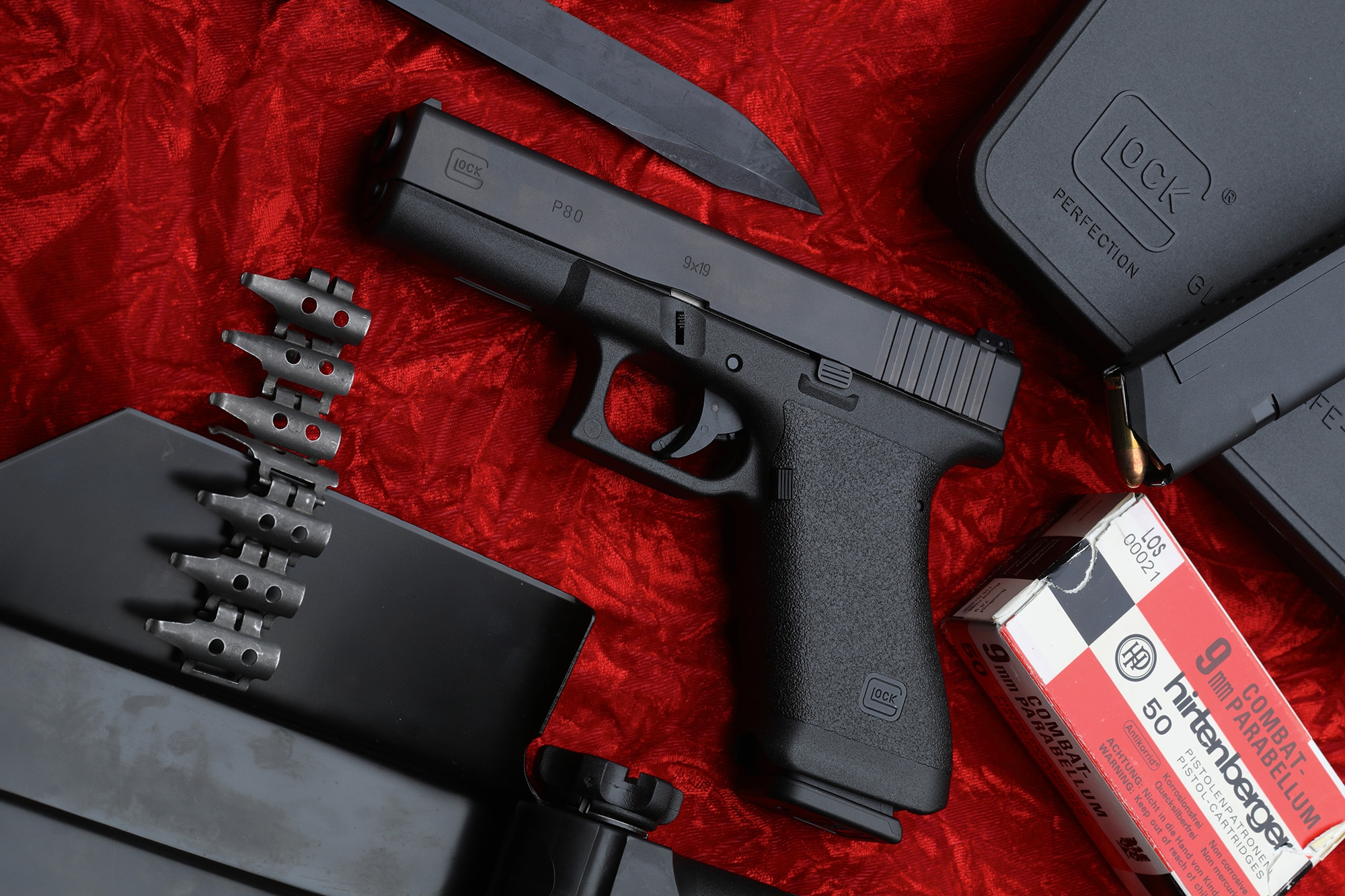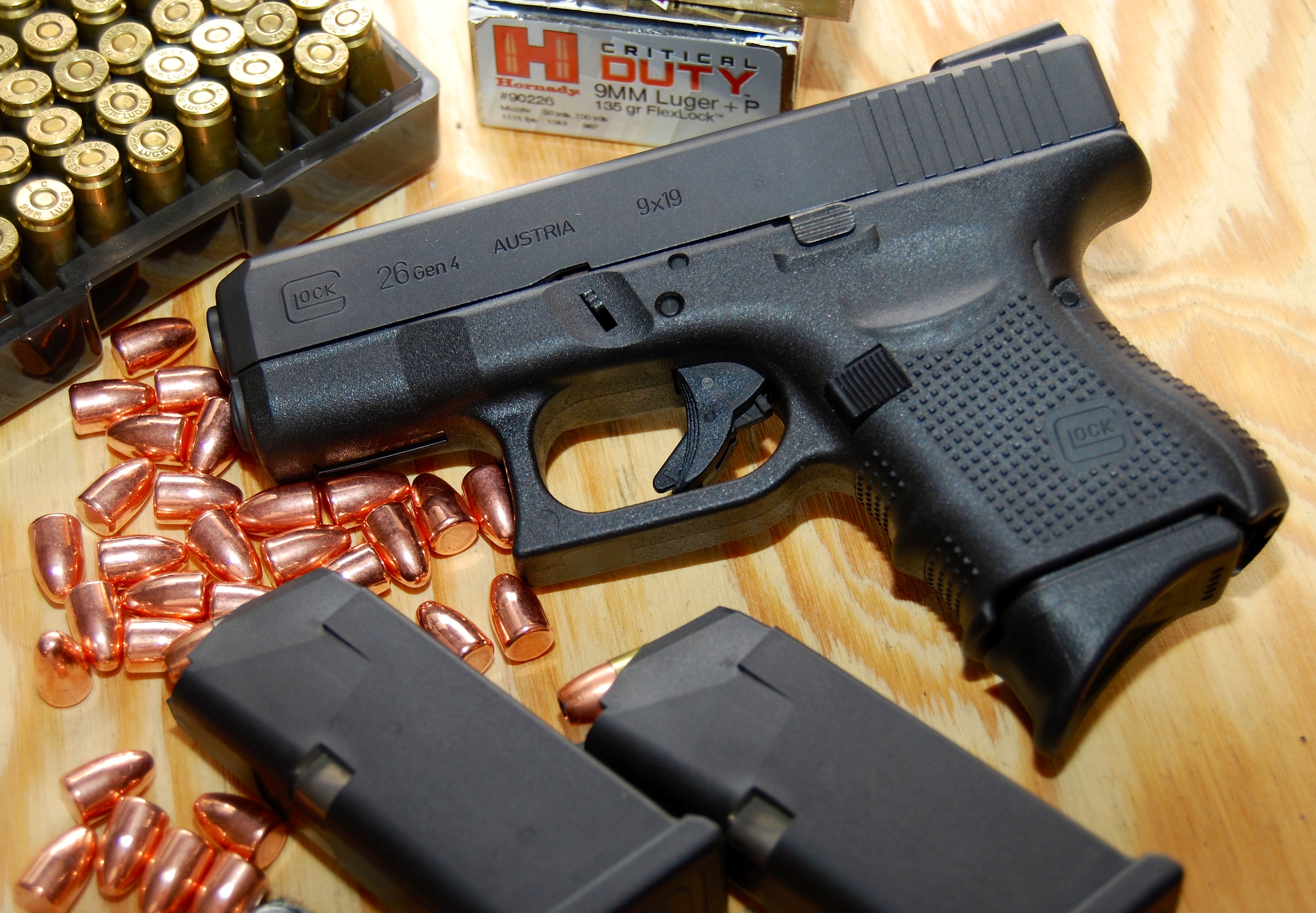Glock 32 Gen 5 Barrel - Riddle... When is a .357 not mag? It has the shape of a .357 sig when fired with a Glock 32. I have always wondered about the .357 Sig. I've heard great things about it, such as its ability to push a 125 grain bullet out of a semi-auto barrel at 1,300 mph in .357 magic balls (especially with that mag cartridge). carries a four-inch barrel or thinner). Well, I tried one… our good family friend Glenn has a large arsenal and we meet every year on Christmas Eve as we have in years past. Glenn is like family, so when he offered to shoot some guns I jumped at the chance. I was especially looking forward to shooting his Glock 32 in .357 Sig.
So, before we get into the specifics of the gun (let's face it: the shooter isn't very familiar to shooters, especially Gen 3 models, so I won't use too many words to describe it), let's take a look at where the S .357 Sig cartridge came from and a bit of history.
Glock 32 Gen 5 Barrel

The .357 Sig (known as SAAMI or .357 SIG by its international counterpart SAAMI, C.I.P.) is the product of a commercial partnership between SIG-Sauer and the Federal Cartridge Company. Introduced in 1994, the .357 Sig was the first bottle cartridge since the 1960s. It is based on the .40 S&W cartridge case, which folds down to accept .355 (9mm) bullets. The pistol case with the neck down to accept a smaller diameter bullet is not new. Several other bottle cases were introduced before and after the .357 Sig, including the .400 Carbon in 1996 and the .256 Winchester Magnum in 1960. The .357 Sig has gained attention as an accurate, hard-hitting cartridge. Law enforcement officers and savvy would-be carriers who carry it will be impressed by its ballistics. Here's the SAAMI barrel diagram...bore diameter is .357, not .355.
Igb Austria Barreltechnology
Sign up for our newsletters to receive news on the gun trade, educational content, opinions and changes in the law!
One of the main reasons for developing the .357 Sig was to increase the velocity of the 125-grain .357 Magnum, but with a 4-inch autoloader barrel. 125-grain .357 mag loads are notorious on the streets for stopping threats with very little ammo, so the power needed to have that much stopping power on autopilot and accompanying more ammo capabilities. Introducing the .357 Sig. The Texas Department of Public Safety released the SIG Sauer P226 in .357 in 1996. This was the first implementation of this corridor by a government agency that I found. After a brief return to 9mm pistols, the Texas DPS suspended the reintroduction of these 9mm pistols after some reliability issues arose. At this point they went back to the .357 Sig. To my knowledge, the Secret Service, Federal Air Marshals, and at least 26 police and other government agencies have issued Sig or Glock pistols chambered in .357. Quantities fluctuate, but suffice it to say, these bodies are sold in the stopping power of that round, with the right ammo. I read the officer's report. However, when fired with the .357 Sig, big, bad dogs fall in one shot, not the 9mm 147 grain rounds. Even if it's not a person being shot at, the idea is the same... stop the threat as quickly as possible. You get the idea...it's an effective loophole, otherwise all police departments wouldn't be able to handle it.
Okay, now we see where the .357 Sig comes from. Let's take a look at the gun that shoots… the Glock Model 32.
The Glock 32 is a compact package that makes it an excellent .357 Sig load. The one I shot came with three 10-round magazines instead of 13, but otherwise the stock was the same as the day it came out of the box. I was satisfied with this - the gun shot very well.
Nerd Sly Owb Light Bearing Holster Fits Glock
Glock safe action, 5 pounds, 9.9 ounces
Now let's talk about the tool itself… no surprises here. If you want to learn a little more about Glocks, check out their article on the 10mm Model 20, which covers the company's origins and history, as well as other important facts. I learned a lot from researching this article - it's an interesting read. Also, if you don't know how a 3rd gen Glock differs from say a 4th gen, check out my explanation here.
The Glock 32 was introduced around 1996, followed a few years later by the .357 Sig cartridge. Originally built on the full-size Model 31, the Model 32 has a 13-round capacity and a half-inch shorter barrel than its larger cousin. Obviously the owner of the Glen must have a limited capacity magazine with three 10 round magazines, but this is a standard Gen 3 Model 32.

It is built like all other third generation Glocks with the same bolt, frame, trigger, etc. Here are some pictures I took in case you're not sure how to set them up. I have limited the number of base shots because most of us are already familiar with Glock rifles.
Glock Gen 5 Threaded & Fluted Barrel Standard Length Made By Igb Austria
It's wonderful. As I said above, if you want to learn more about the Glock company and other details, check out the links I've included. Makes for interesting reading.
Here's what will entice you...if you already have one. I checked the price and for around $140 you can get a .357 Sig barrel and try your shooting experience. Your .40 caliber magazine might even work since the .357 Sig is based on the .40 S&W case. Even the 10mm rifle is a candidate for conversion as this cartridge is extended to .40 S&W. Maybe buy a new magazine… Anyone with direct experience with this please comment below. If you have the right rifle, adding a .357 Sig conversion barrel can expand your caliber arsenal at a fraction of the cost.
Shooting any compact Glock is an experience, especially if it is chambered for an impact chamber. I once had a model 30 - compact .45 ACP. It has significant recoil, but is controllable and easy to shoot. With my hand level with the target, it was a cat. This tool is not so much. Those of you who own a .32 will probably agree with me that the recoil level is what you would expect from a smaller pistol. Mind you, I'm not saying the gun is fireproof, but it will let you know when to pull the trigger. If all your shots are 9mm Glocks, then it will at least get your attention when you're shooting.
I ran some numbers with a recoil energy calculator and came up with a very rough estimate of recoil energy for a Model 32 with a 125 grain bullet. That number is 9.1 pounds…not too bad, but remember that the .243 Wildfire rifle has the same level of recoil energy. I fired a 115 grain 9mm load and produced about 4.4 pounds of recoil energy. (For comparison, my old .45 ACP load produced 7.8). So we see that the .357 Sig speaks authoritatively on both sides. I want to emphasize that gun control is possible - all of those law enforcement agencies mentioned above wouldn't be using them if they couldn't teach their people how to shoot properly. The beauty of this faster (125 grain) bullet is that it travels at 1300 or more. At that velocity it would be hard to control the tracking of a heavier bullet...I'm referring to my experience with the Grain Model 30 .45 ACPâ 230. At only about 800-850 feet it still packs a decent amount of punch. I set it to 1000 f.p. I don't mind shooting anywhere close. If possible or reasonable, it is (at least for me). Even so, the .357 Sig exhibits excellent balance and allows for quick tracking. But is it true?
Custom Glock Slides Guide
Here is a representative target I shot with the Model 32. I took this off the block position and rested it on my arm to shoot at the wall from the block. I figured since the gun was designed for concealed carry/law enforcement I wouldn't want to shoot it
Glock gen 2, glock gen 6, glock gen 4 17, gen 17 glock, gen glock, glock 32 gen 3 review, glock 32 acp, glock gen 4 mags, 1st gen glock 17, glock 21 gen 3, glock gen 3 22, glock 30 gen 3
